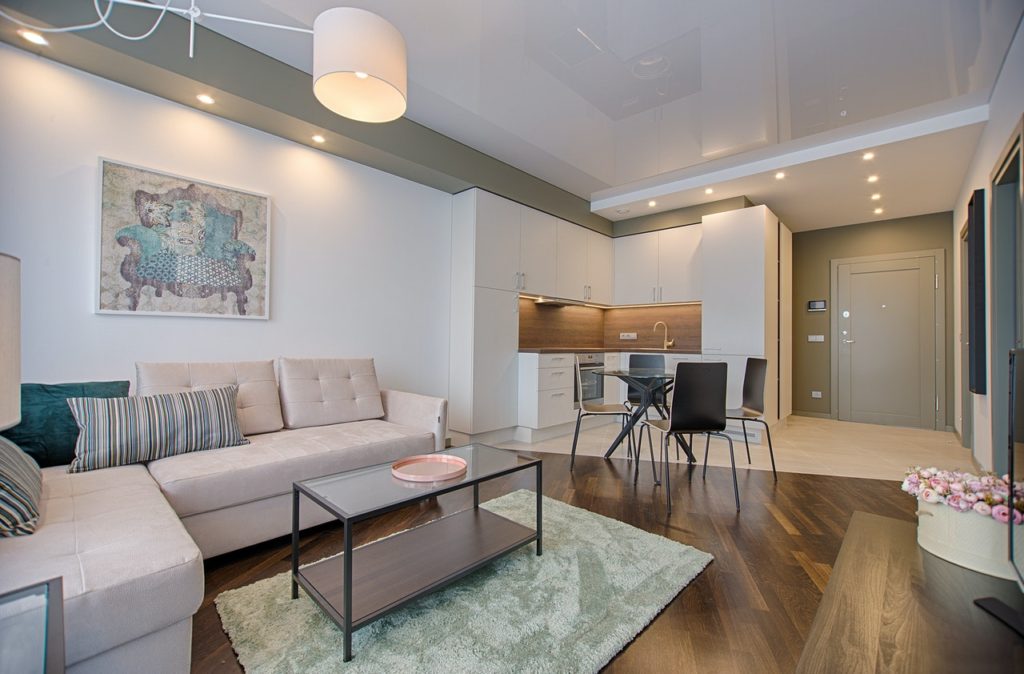When talking interior design, you’ve probably heard about good lighting way too much that you start to overlook it. You might think that an interior with good lighting is achievable by installing ceiling, floor, and wall lamps here and there.
But the truth is, achieving a home that is lit adequately with light coming from the right sources isn’t just about buying lamps.
A home’s lighting affects ambiance, mood, and level of comfort. To achieve a good living experience, you can follow these tips to improve indoor lighting:
1. Consider the height of your ceiling.
Some homes choose to have high ceilings; some don’t. From a design perspective, you can go for the height you want that is suitable for your home’s structure. Another thing to consider is the size of the light fixtures you’ll be installing.
Lower ceilings give you a choice to opt for shorter fixtures, while high ceilings give you a decent amount of fixture sizes to choose from. The catch with high ceilings is that the light emitted by the fixtures have to be strong enough to reach downward.
2. Add lights over your kitchen table.
Lighting your kitchen table up with a light fixture above your table’s structure is a good way to increase your home’s luminosity. When eating, you’d want to be able to do it in a place with good lighting.
Keep in mind that when picking a fixture to install, you’d want to keep the distance of the fixture from the tabletop by 28 to 34 inches (0.86 meters), calculate depending on the height of your table and ceiling.
3. Create a lighting plan.
Before diving right into selecting light fixtures and installing them, you should first consult your architect and interior designer to plan how the lighting will be managed. The windows and doorways should also be considered while doing so.
The plan will include picking the right light fixtures, where to place them, curtains, and indoor solar shades. You can visualize the amount of lighting you want for your indoor space before going right ahead with purchase and installation.
4. Swag your wires.
Swagging a cord can is an option when you want to modify your home’s lighting but don’t want the hassle of changing your overall wiring system to accommodate new lights.
Swagging your wires to a bar or a hook installed in the ceiling or wall can help eliminate the possibilities of bad wire management due to lighting modifications.
5. Don’t rely on downlighting.
Downlighting should only be done when it’s exceptionally bright outdoors, and your home can take in as much natural light as possible. Downlights are soft light fixtures that provide a softer feel of lighting indoors.
They cast soft shadows on surfaces and are comfortable to the eyes. But they shouldn’t be the only lights inside your home. You should rely on brighter lights more, especially if you don’t get much natural light in.
6. Use hues.
The light fixtures you choose to have installed inside your home won’t dictate the hue of light coming out of its bulbs. You have the option to choose between different bulbs compatible with your fixtures to achieve warm or cool hues that will suit your home’s style.
An interior painted with cool tones should be matched with warm-toned light bulbs, and cool tones of light can brighten up a dark-colored space.
7. Give your stairs some light.
Installing good lighting to the area of your stairs is a good idea because it promotes safe navigation of the otherwise potential hazard inside a home. Most of them are built enclosed, and they—and you—would benefit from lighting the area up.
8. Add toe-kick lighting.
Toe-kick lighting is adding light strips under your cabinets that rest on the floor. They can be purely for aesthetics, but they can also be installed to use as night lights.
9. Colors are your friends.
With so many colors to choose from, it’s amazing how people manage to pick the same colors. The tip here is not to be afraid to mix things up and give life to a space using colors. You can use shades that you can put over your bulbs, and you’ve got yourself a way to make your lights look cooler.
10. Decorate, decorate, and decorate.
Setting your home’s mood with various lights is one thing, but you can spice things up using wall art to provide ambient lighting for your indoor spaces. Light doesn’t always have to come from bulbs on the ceiling; they can come from everywhere you want them to.


